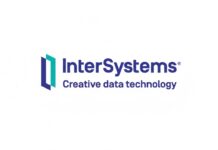The healthcare landscape is undergoing a transformative shift as it adapts to rising challenges while embracing emerging technologies. Pressures such as workforce shortages, increased costs, and growing patient expectations are prompting health systems to seek smarter, more sustainable solutions.
Armin Ernst knows that artificial intelligence and digital innovations are stepping in to support everything from diagnostics to administrative efficiency. These tools are not only helping clinicians deliver more personalized care but also empowering patients to take a more active role in their health journeys.
However, the road to digital transformation is not without obstacles—concerns around privacy, training, and equitable access continue to shape the pace and direction of change. As we look ahead, the future of healthcare will hinge on thoughtful integration of technology, strong cross-sector collaboration, and a continued focus on human-centered care.
Pressures Facing Today’s Health Systems
Healthcare systems are under increasing strain due to workforce shortages, rising operational costs, and limited resources. These pressures are making it harder to maintain quality care while meeting demand. With aging populations and chronic diseases on the rise, these stressors are only intensifying, pushing systems toward their limits.
Many communities, especially those in rural or underserved regions, continue to face barriers in accessing timely medical services. At the same time, patients today expect more personalized, convenient, and responsive care than ever before, which adds to the urgency for change. Shifting expectations are forcing healthcare providers to evolve quickly, even when resources are stretched thin.
Traditional models of care delivery often struggle to keep up, especially when demand outpaces capacity. This gap highlights the need for more sustainable, system-wide improvements.
How Artificial Intelligence Is Supporting Healthcare
Artificial intelligence is emerging as a powerful tool across various areas of healthcare. In diagnostics, machine learning models are helping identify patterns in medical data that might be missed by the human eye, leading to earlier detection of diseases like cancer or heart conditions. These systems are also being used to forecast patient outcomes, allowing providers to anticipate complications before they arise. In some cases, AI has even detected anomalies invisible to traditional imaging methods.
Hospitals are increasingly turning to AI to streamline administrative tasks such as billing, appointment scheduling, and data entry. This reduces the burden on staff and allows clinicians to focus more on patient care. In emergency departments, algorithms now assist in triaging patients by analyzing symptoms and vital signs to prioritize treatment efficiently. The time saved in these processes can directly impact patient survival and satisfaction.
Broader Innovations Transforming Care
Digital health tools have redefined how care is delivered and accessed. Virtual consultations through telehealth platforms now allow patients to connect with doctors without leaving home, expanding access in areas where medical specialists are scarce. Wearable devices track everything from heart rate to sleep quality, helping individuals take a more active role in managing their health. These tools are especially valuable for patients with mobility challenges or limited transportation options.
The shift toward integrated electronic health records has made care more cohesive. When systems can securely share patient information across providers and locations, it reduces duplication and errors while improving continuity. Startups have also introduced new models of care, blending technology with home-based services or community clinics designed around patient convenience. Some of these models emphasize preventive care, aiming to keep patients healthier for longer.
Impact on Patients and Providers
AI and digital technologies are helping clinicians make faster, more informed decisions. With real-time data and predictive tools, providers can identify risks earlier and tailor treatment plans more precisely, leading to better outcomes and fewer delays in care. In high-pressure environments like intensive care units, such decision support can be lifesaving.
On the patient side, tools like mobile apps and remote monitoring devices offer a new level of involvement in their own health. People managing chronic conditions are now able to track symptoms, medication, and progress over time, which fosters a sense of control and engagement. This sense of agency often leads to better adherence to treatment plans.
Clinicians, meanwhile, are experiencing relief from repetitive administrative burdens. Automated documentation and scheduling tools free up valuable time, allowing them to focus more on direct patient interaction and less on paperwork—an important step toward reducing burnout. This also improves patient satisfaction, as providers can be more present during consultations.
Challenges in Adoption and Use
Despite the promise, adopting new technologies isn’t without barriers. Concerns about data security and patient privacy remain high, particularly as more personal health information is collected and stored digitally. Health systems must prioritize trust and transparency as they integrate these innovations. Regulatory frameworks are evolving, but gaps still exist in enforcement and standardization.
Another hurdle lies in workforce readiness. Many healthcare professionals aren’t trained to use complex digital systems, which can result in underutilization or resistance. Bridging this gap requires not only education but also thoughtfully designed tools that support, rather than overwhelm, clinical workflows. Peer-led training programs and user-friendly interfaces can boost confidence and competence.
Financial constraints can also slow progress. Smaller clinics or underfunded hospitals may lack the infrastructure to deploy advanced technologies, which creates disparities in access to innovation. Closing this digital divide is essential for achieving more equitable healthcare outcomes. Without targeted investments, underserved communities may be left behind.
Looking Ahead: Evolving Health Systems
As digital tools and AI continue to mature, healthcare is gradually shifting toward a more proactive and predictive model. Rather than reacting to illness, systems are being built to anticipate it—using data to guide interventions before conditions worsen. This shift could redefine the role of preventive care in future health strategies.
This evolution depends on strong collaboration across sectors. Partnerships between technology developers, healthcare providers, and policymakers are driving new standards for innovation, safety, and equity. When aligned, these efforts can accelerate progress at scale. Sharing best practices and aligning incentives are also key to sustained momentum.


















